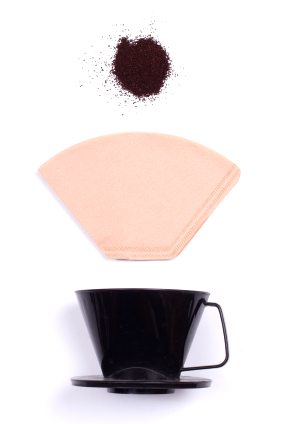- Home
- Blog
- Healthy Eating for Wellness
- Coffee. How do you brew?
Coffee. How do you brew?
Written by Catherine Saxelby
on Wednesday, 13 May 2015.
Tagged: caffeine, cholesterol, coffee, drinks, energy, health, healthy lifestyle, nutrition, tea

That first morning cup of coffee has become an integral part of our modern lifestyle. Whether it’s a peaceful cuppa before the morning rush or a hurried espresso from the ready-to-go café at the train station, most of us can’t start the day without it.
Coffee – never mind the caffeine, what about the cholesterol?
Do you have high cholesterol levels? If you do then there are many things you can try to lower them before you resort to medications e.g. taking fish or krill oil supplements, reducing the trans fats in your diet, losing weight if you need to, eating more soluble fibre from foods like oats and legumes, and increasing the amount of exercise you take. All these can assist in bringing down cholesterol levels but did you know that the way you brew your morning coffee can also have an impact?
The demise of filter coffee and the rise of espresso
There was a time when almost every kitchen sported a drip filter coffeemaker that used paper filters. Now these have been consigned to garage sales and council skips to be replaced by shiny, futuristic espresso machines. According to researchers in the USA1 and Scandinavia2, that’s NOT good news for our health.
They reported that consumption of plunger coffee, boiled brews (like Scandinavian, Turkish, Greek and percolator coffee) and espressos can raise cholesterol levels. The only coffee brew that doesn’t adversely affect cholesterol levels is the paper drip filter method.
What’s the problem?
 Unfiltered coffee contains two compounds called cafestol and kahweol which were originally thought to raise levels of low-density lipoprotein (LDL or bad cholesterol) in humans. These compounds are found in all the lovely, full-bodied coffee brews we like – espressos, French Presse or plunger coffee, percolators and those thick Greek and Turkish coffees.
Unfiltered coffee contains two compounds called cafestol and kahweol which were originally thought to raise levels of low-density lipoprotein (LDL or bad cholesterol) in humans. These compounds are found in all the lovely, full-bodied coffee brews we like – espressos, French Presse or plunger coffee, percolators and those thick Greek and Turkish coffees.
However, more recent research by a team in The Netherlands3 absolves kahweol and lays the blame firmly with the cafestol in these unfiltered coffees. The paper used in drip filter coffee preparation binds these compounds, so removing them from the coffee.
How does it work?
It appears that the cafestol in unfiltered coffee reduces the effect of three liver enzymes which regulate cholesterol levels. Studies4 suggest that drinking five cups of unfiltered coffee a day (containing 30 milligrams of cafestol) for four weeks can raise your blood cholesterol levels by 6 to 8 percent. Personally, I think five cups of coffee a day is three too many anyway.
What should you do?
If your cholesterol is at healthy levels and you only drink one or two cups of unfiltered coffee a day then it would seem there is little risk.
However, if you’re a heavy coffee drinker or you’re trying to reduce your cholesterol levels then it would seem sensible to reduce your consumption, use a paper filter method or switch to tea.
An interesting paradox
While the cafestol in coffee has assumed the role of villain, research is showing that the other compound we mentioned– kahweol – appears to stop the growth of new blood vessels in tumours as well as having anti-inflammatory properties. A classic case of swings and roundabouts and so the truism “all things in moderation” appears once again to be the best course of action.
References:
1. From Science Daily How coffee raises cholesterol and paper from the July 2007 issue of the Journal Molecular Endocrinology.
2.Lindahl B, Johansson I, Huhtasaari F et al. Coffee drinking and blood cholesterol—effects of brewing method, food intake and life style. J Int Med, 1991, 230;4:299–305.
3. Boekschoten MV, Schouten EG, Katan MB. Coffee bean extracts rich and poor in kahweol both give rise to elevation of liver enzymes in healthy volunteers. Nutrition Journal 2004, 3:7.
4. Various studies carried out by Dr Martijn Katan of Vrie Universiteit Amsterdam, Institute for Health Sciences, The Netherlands. For example this study on the diterpene cafestol .
Image of coffee being poured courtesy of Shutterstock.com.
Foodwatch
The Good Stuff
The Boring Stuff
© 2025 Foodwatch Australia. All rights reserved
Website by Joomstore eCommerce





